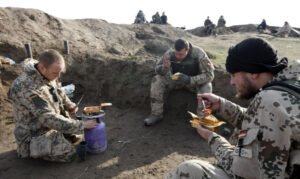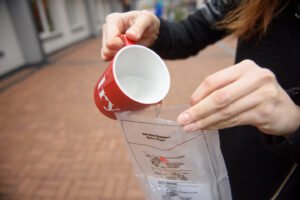When disaster strikes—whether it’s a hurricane, earthquake, pandemic, or conflict zone—speed, efficiency, and reliability can mean the difference between life and death. In these moments, supplies have to be delivered quickly, stored safely, and remain effective even under extreme conditions. Lyophilization, or freeze-drying, plays a crucial behind-the-scenes role in making that possible.

One of the biggest challenges in disaster relief is preserving the integrity of food and medicine during transport. Fresh produce spoils quickly, refrigerated goods require constant power, and many medications lose their potency without strict temperature control. In crisis zones, electricity is often unreliable—or completely unavailable. Freeze-drying offers a way to sidestep these obstacles entirely.
By removing water content while preserving the product’s original structure, lyophilization creates goods that are stable at room temperature for months or even years. This means aid agencies can store and deploy large quantities of food, nutritional supplements, or medical supplies without worrying about spoilage. And when it’s time to use them, a quick addition of clean water restores them to their original form.


For food relief, this technology is invaluable. Freeze-dried meals are lightweight, compact, and nutrient-dense. A single pallet of freeze-dried rations can feed far more people than the same volume of canned or fresh goods, and transport costs are lower because water—the heaviest part of most foods—has been removed. Relief teams can carry more in each shipment, getting help to more people, faster.
The same advantages apply to medicines. Vaccines, antibiotics, and other life-saving drugs can be stabilized through lyophilization so they don’t require refrigeration. This is especially critical in remote or cut-off areas, where cold-chain logistics are impossible to maintain. During the COVID-19 pandemic, for example, freeze-dried vaccine candidates were explored as a way to improve distribution in low-resource settings.
Even outside of large-scale disasters, lyophilized supplies form an essential part of emergency preparedness. Hospitals, governments, and humanitarian organizations keep stockpiles of freeze-dried foods, baby formula, blood plasma, and medications for quick deployment during crises. Military units rely on them for field operations, and space agencies use them for astronauts—proof that this technology is trusted in the most demanding environments.
Of course, lyophilization is not a magic bullet. Clean water is still needed for rehydration, and initial processing requires specialized facilities. But its ability to drastically extend shelf life and reduce logistical barriers makes it one of the most reliable tools in emergency planning.
In times of stability, freeze-drying might feel like a convenience. In times of crisis, it becomes a lifeline—quietly ensuring that when the unthinkable happens, help arrives not just quickly, but in a form that’s safe, effective, and ready to use.